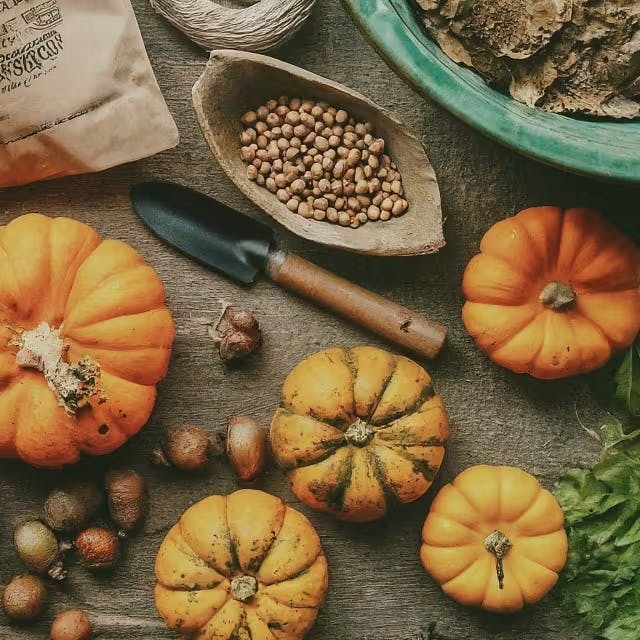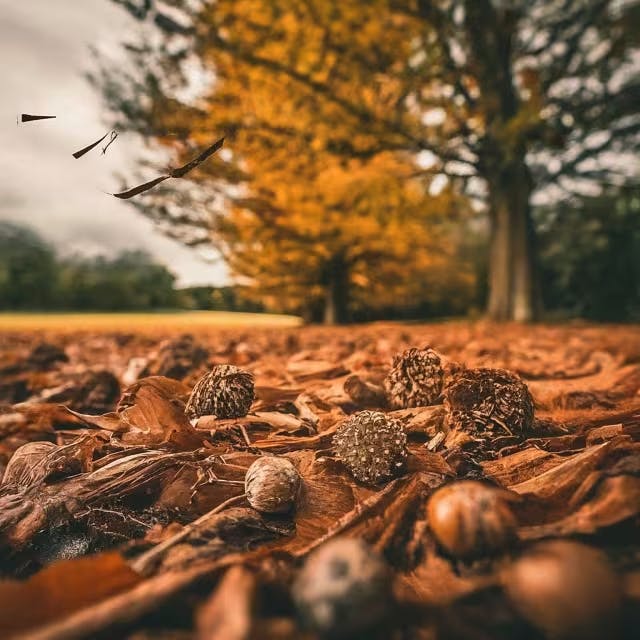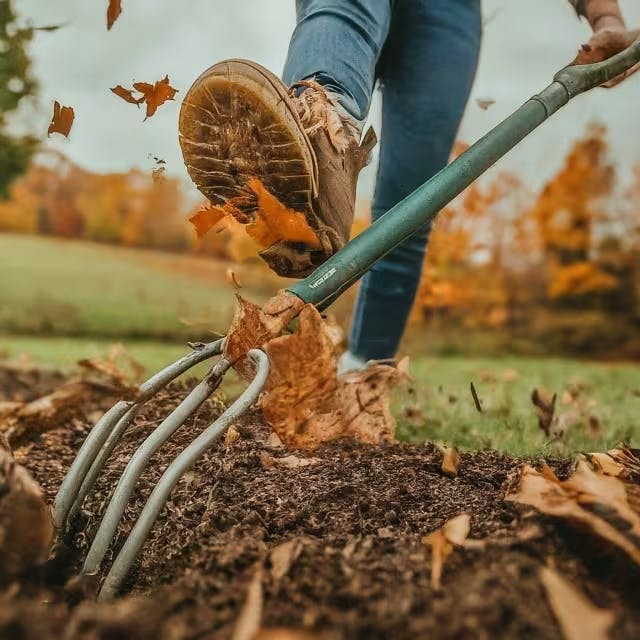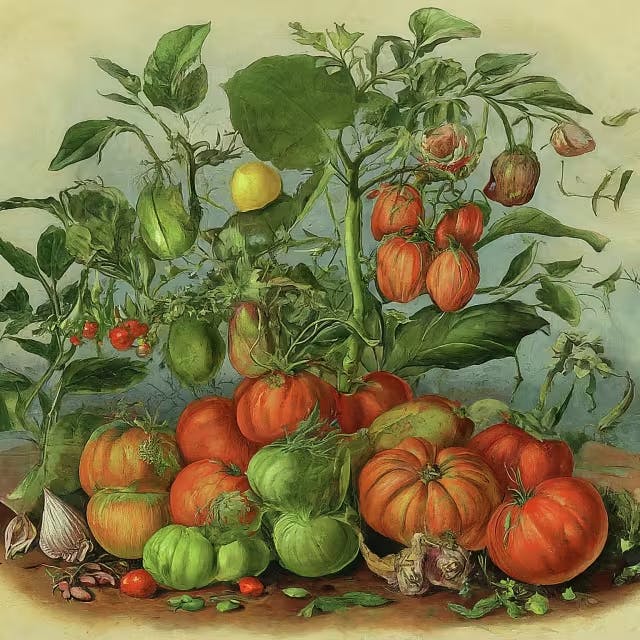Preparing for Autumn: Seed Collection and Preparation Tips
Go4Turf
February 26, 2024

As the unique climate in Morgan Hill gifts gardeners an extended growing season, preparing for autumn becomes a crucial activity for ensuring a bountiful harvest next year. From collecting seeds from heat-sensitive plants that thrive in August, like tomatoes and cucumbers, to beginning autumn planting with seedlings of artichoke, broccoli, and more, this article offers invaluable seed collection and preparation tips for the coming season. Not only does it delve into how to properly collect seeds and prepare your garden soil for autumn planting, but it also touches on selecting the right seeds for your specific climate, ensuring you're equipped with the knowledge to enhance your garden's productivity through the cooler months.
Key Takeaways
Collecting seeds in autumn is crucial for those in climates like Morgan Hill, allowing gardeners to preserve the best traits of heat-sensitive plants for the next growing season.
Proper seed collection techniques can significantly impact the viability and quality of seeds for spring planting, including timing and method of harvest.
Storing seeds correctly over winter ensures they remain viable until planting time, requiring a cool, dry place and possibly airtight containers to prevent moisture damage.
Preparing your garden soil in the fall is essential for autumn planting, enhancing soil fertility and structure for spring crops.
Selecting the right seeds for your specific climate is vital, as certain varieties will perform better under local conditions than others.
Autumn planting of select seedlings, like artichoke and broccoli, can set the stage for a bountiful harvest in the spring and summer months.

The Importance of Seed Collection in Autumn
Autumn is a key time for gardeners and plant enthusiasts to collect seeds for the following year. This activity not only saves money but also helps preserve plant diversity. To start, identifying mature seeds is crucial; they often have a dry and firm texture. Harvesting too early or too late can affect germination rates. After collection, proper drying is essential. Seeds should be spread out in a warm, airy space away from direct sunlight to prevent mold growth. For long-term storage, placing seeds in paper envelopes labeled with the plant name and collection date, then storing in a cool, dry place, ensures viability. For more on optimizing your gardening practices, check out our comprehensive guide on seed storage.
How to Properly Collect Seeds for Next Season
For those looking to make the most out of their garden year after year, seed saving is a pocket-friendly strategy full of rewards. To kickstart this process, focus on self-pollinating plants like tomatoes, peppers, beans, and peas, which effortlessly gift you seeds that are easy to save and yield consistent results. These seeds don't require much beyond basic cleaning before they're ready for storage. For the best outcomes, choose open-pollinated varieties; unlike their hybrid counterparts, they faithfully replicate the parent plant's characteristics, from flavor to fruit quality.
However, it's crucial to sidestep the temptation of saving seeds from hybrid plants. Despite their appealing traits, hybrids won't reliably pass these on to the next generation. This unpredictability might leave you with less than desirable crops.
When it comes to storage, seeds prefer a cool and dry spot. This simple step ensures they stay viable and ready to sprout when planting season arrives. Additionally, consider a brief treatment with bleach or hot water to fend off potential diseases, setting your future seedlings up for success.
Remember, the effort you put into selecting and preparing seeds directly influences your garden's health and yield. Taking that extra step to ensure their quality can make all the difference. For more insights and tips on preparing your garden this fall, discover how to transition your garden for fall with expert advice. And for those who can relate to the thrill of unwrapping a packet of seeds, explore the parallels between gardening and venture capital, celebrating the growth and anticipation inherent in both pursuits.
Securing a bountiful harvest starts with your seeds, so approach this initial step with the attention and care it deserves.
Tips for Storing Your Seeds Over Winter
When storing seeds over the winter, ensuring they remain dry and cool is crucial for preserving their vitality until planting season. Utilizing desiccants, such as silica gel or powdered milk, can effectively absorb any excess moisture, helping prevent mold growth and seed spoilage. A simple, yet effective strategy involves placing these desiccants in an airtight container alongside your seeds.
Labeling your seeds with detailed information, including the plant type, variety, and date of collection, will organize your gardening efforts and help track seed viability. For those dealing with tomato seeds, adopting seed treatment methods to mitigate disease risks can safeguard your future crops. Healthy starting materials pave the way for a fruitful garden. Exploring more about preparing seeds for optimal health and seed starting mixtures can further enhance your gardening success.

Preparing Your Garden Soil for Autumn Planting
Before the chill of autumn sets in full swing, taking the time to nourish your garden soil can pave the way for a flourishing spring. Begin by evicting weeds, those uninvited guests, from your garden beds. This not only tidies up your garden but also removes potential homes for pests over the colder months.
Testing your soil's pH is a crucial next step, enabling you to understand what your garden will need to thrive. If your soil is too acidic or too alkaline, you won't be getting the best out of your plants. Adjusting the pH, whether by adding limestone to increase it or sulfate to decrease it, ensures your plants can absorb nutrients efficiently.
Incorporating organic matter like compost or leaves directly into your garden without mixing significantly benefits the soil's structure and life. This practice supports the bustling ecosystem beneath the soil surface, fostering worms and beneficial bacteria essential for plant growth.
After the first hard frost, laying down a blanket of mulch not only insulates your garden bed but also aids in moisture retention and weed suppression throughout the winter months. Moreover, it's a fantastic way to maintain even soil temperatures, giving your plants a stable environment to root in when the time comes.
By prioritizing these steps, you're not just preparing your garden for winter; you're setting the stage for robust plant growth, bountiful harvests, and vibrant blooms come spring. For more insights on getting your garden ready for the colder weather, consider diving into strategies for preparing raised beds for winter, including tips on autumn garden care and the importance of cleaning up dead vegetation to deter pests and diseases.

Selecting the Right Seeds for Your Climate
Understanding your local climate is pivotal when choosing seeds for your garden, especially as you're preparing for autumn. Utilizing the USDA Plant Hardiness Zone Map can guide you in selecting plants that will not only survive but thrive in your region. For those aiming to grow garlic, an excellent resource is discovering the perfect garlic variety, which highlights the importance of matching plant varieties with your local climate for optimal growth.
When perusing options, consider the advantages of open-pollinated and heirloom seeds, which can be saved and sown in subsequent years, potentially adjusting and becoming more resilient to your specific growing conditions. Conversely, while hybrids might offer disease resistance or better yield, their seeds, if saved, may not reproduce true to the parent plant, leading to unexpected outcomes in the garden.
Moreover, in the quest for a greener thumb, aim for seeds from companies dedicated to organic, non-GMO practices to ensure not only the health of your garden but also that of the environment. These selections have the added benefit of offering a broader variety of plants, enriching your garden's biodiversity and sustainability.
For an in-depth understanding of how to choose garden seeds and the implications of different seed types on health and garden success, enrich your knowledge base by exploring how to choose garden seeds. This resource elaborates on the significance of navigating between hybrids, open-pollinated, and GMO seeds, guaranteeing a well-informed seed selection process for your autumn garden preparation. In conclusion, understanding the nuances of preparing for autumn through effective seed collection and preparation can significantly boost your garden's productivity and diversity in the spring. By selecting the right seeds, ensuring they are stored properly, and preparing your garden soil with due diligence, you lay the groundwork for a thriving and resilient garden. Remember, taking the time to collect and prepare seeds in the autumn not only promotes sustainability but also enriches your gardening experience for seasons to come.
Frequently Asked Questions
What are the best practices for collecting and preparing seeds for next year's garden?
To ensure a successful harvest from your saved seeds, focus on collecting from self-pollinating, open-pollinated varieties like tomatoes, peppers, beans, and peas for consistent results. Avoid saving seeds from hybrid plants as they may not reproduce true to type. After harvesting, dry the seeds in a warm, aired space away from direct sunlight and store them in a cool, dry place, ideally in paper envelopes labeled with the plant's name and collection date. Consider pre-treating seeds with bleach or hot water to prevent disease and use desiccants like silica gel in storage to keep seeds dry.
How can you ensure seeds remain viable over winter for a successful germination?
To ensure seeds remain viable over winter, store them in a cool, dry place and consider using desiccants like silica gel or powdered milk in an airtight container to absorb excess moisture. Label the seeds with the plant type, variety, and collection date. For tomato seeds, adopt treatment methods to mitigate disease risks, setting your future garden up for success.
What are the benefits of choosing open-pollinated seeds over hybrid ones for your garden?
Choosing open-pollinated seeds over hybrid ones for your garden offers several benefits, including the ability to save and reuse seeds year after year, which saves money and helps maintain biodiversity. These seeds typically yield plants that closely resemble the parent plant in terms of characteristics, ensuring consistency in flavor, fruit quality, and growth habits. Additionally, they can adapt over time to the local growing conditions and climate of your garden, potentially becoming more resilient and productive.
How does preparing your soil in autumn benefit your spring garden?
Preparing your soil in autumn for your spring garden offers numerous benefits, including improved soil structure and fertility due to the incorporation of organic matter like compost. This enriches the soil, fostering a healthy ecosystem for worms and beneficial bacteria that are essential for plant growth. Additionally, mulching after the first hard frost helps with moisture retention, weed suppression, and maintaining even soil temperatures, providing a stable environment for plant roots to thrive in spring.
Why is understanding your local climate essential when selecting seeds for your autumn garden preparation?
Understanding your local climate is crucial when selecting seeds for your autumn garden because it ensures that the chosen plants are well-suited to thrive in your specific weather conditions. This practice not only improves plant health and yield but also aids in preserving biodiversity by enabling the cultivation of a wider variety of plants, particularly those that are open-pollinated or heirloom. Additionally, opting for seeds from organic and non-GMO sources further benefits the environment and enriches your garden's sustainability.